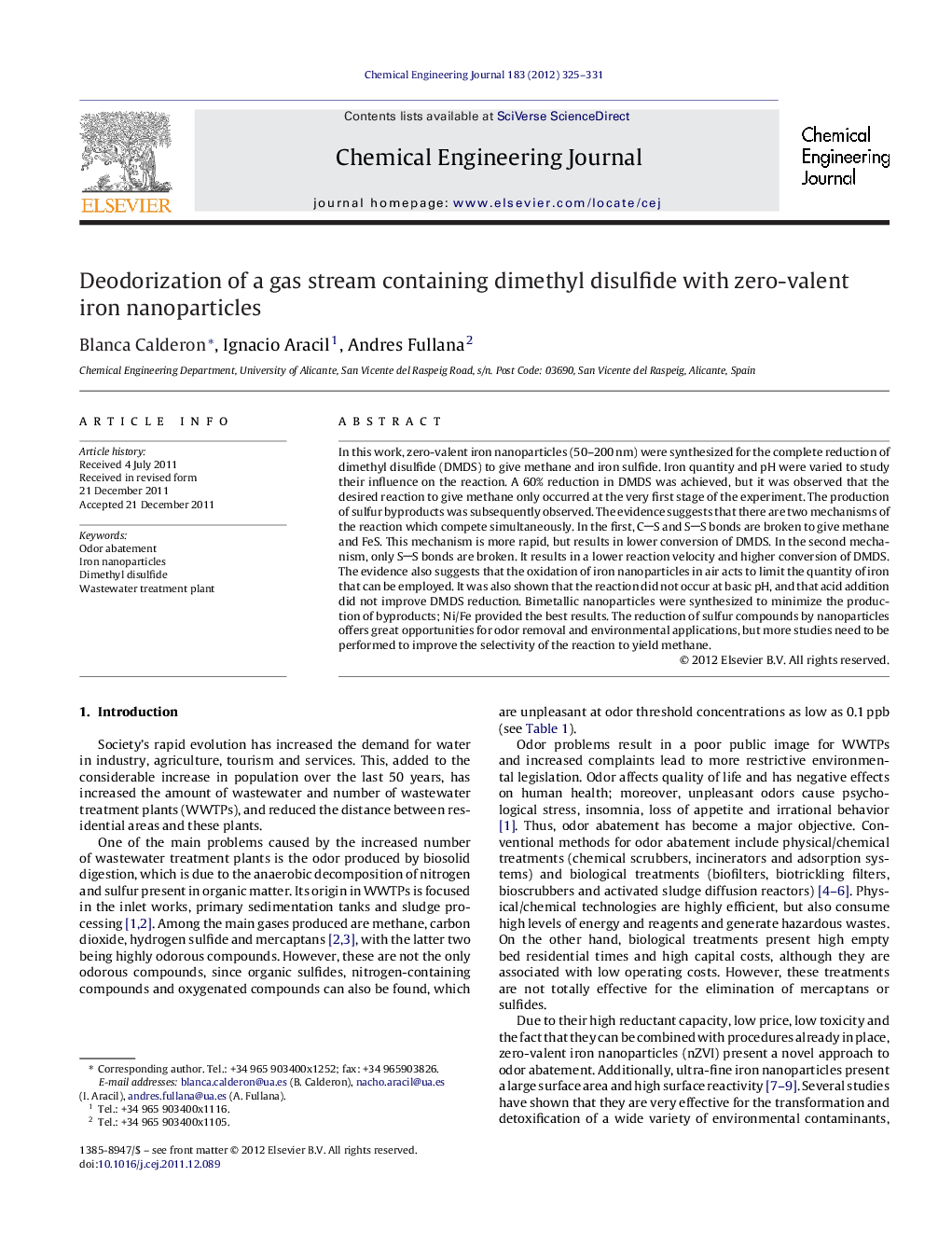| کد مقاله | کد نشریه | سال انتشار | مقاله انگلیسی | نسخه تمام متن |
|---|---|---|---|---|
| 150313 | 456447 | 2012 | 7 صفحه PDF | دانلود رایگان |

In this work, zero-valent iron nanoparticles (50–200 nm) were synthesized for the complete reduction of dimethyl disulfide (DMDS) to give methane and iron sulfide. Iron quantity and pH were varied to study their influence on the reaction. A 60% reduction in DMDS was achieved, but it was observed that the desired reaction to give methane only occurred at the very first stage of the experiment. The production of sulfur byproducts was subsequently observed. The evidence suggests that there are two mechanisms of the reaction which compete simultaneously. In the first, CS and SS bonds are broken to give methane and FeS. This mechanism is more rapid, but results in lower conversion of DMDS. In the second mechanism, only SS bonds are broken. It results in a lower reaction velocity and higher conversion of DMDS. The evidence also suggests that the oxidation of iron nanoparticles in air acts to limit the quantity of iron that can be employed. It was also shown that the reaction did not occur at basic pH, and that acid addition did not improve DMDS reduction. Bimetallic nanoparticles were synthesized to minimize the production of byproducts; Ni/Fe provided the best results. The reduction of sulfur compounds by nanoparticles offers great opportunities for odor removal and environmental applications, but more studies need to be performed to improve the selectivity of the reaction to yield methane.
Figure optionsDownload as PowerPoint slideHighlights
► Iron nanoparticles are used to reduce dimethyl disulfide to methane.
► Complete reaction only occurs at the beginning.
► Other odorous byproducts are formed.
► Ni/Fe nanoparticles enhance the production of the complete reaction.
Journal: Chemical Engineering Journal - Volume 183, 15 February 2012, Pages 325–331